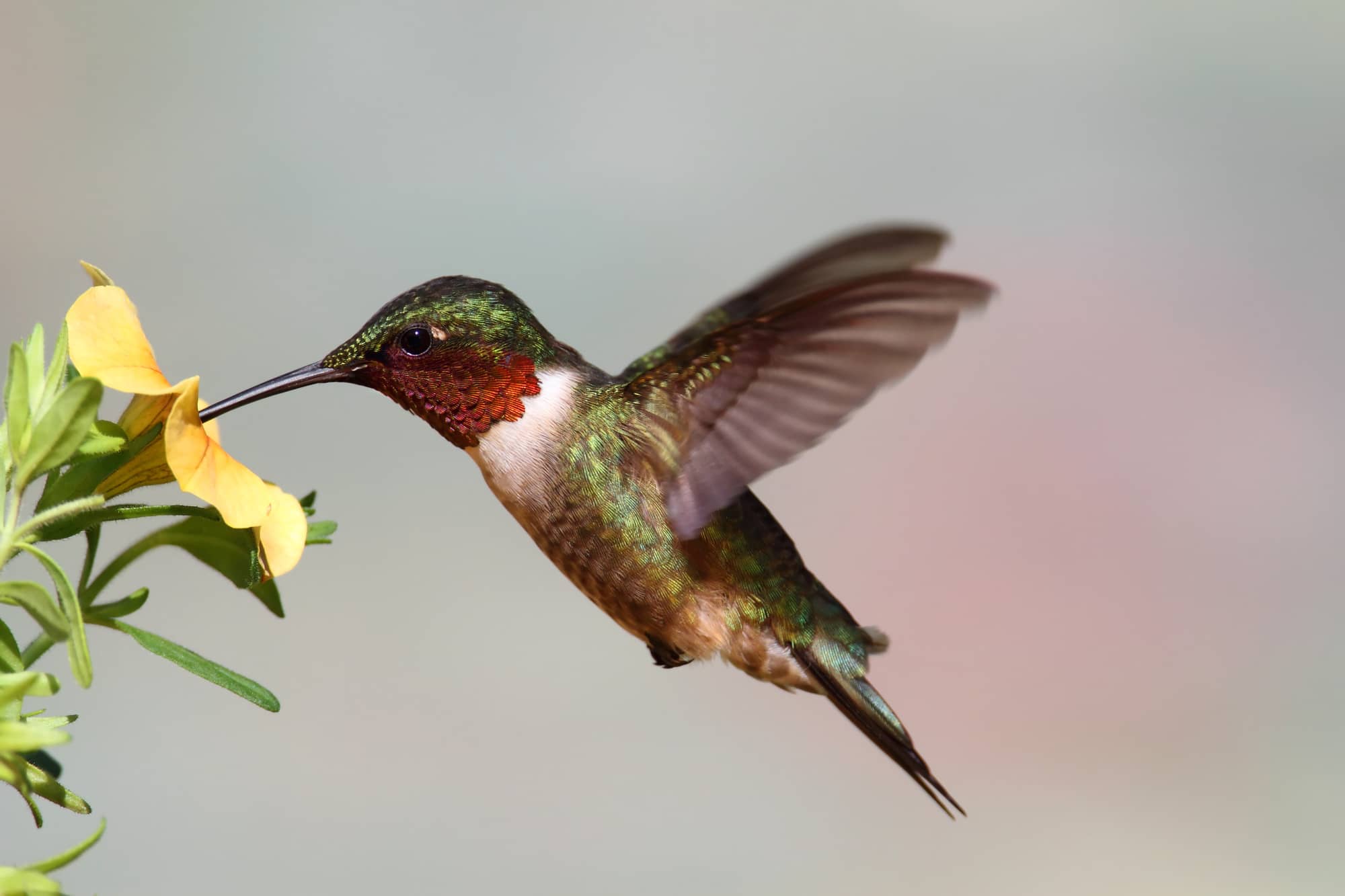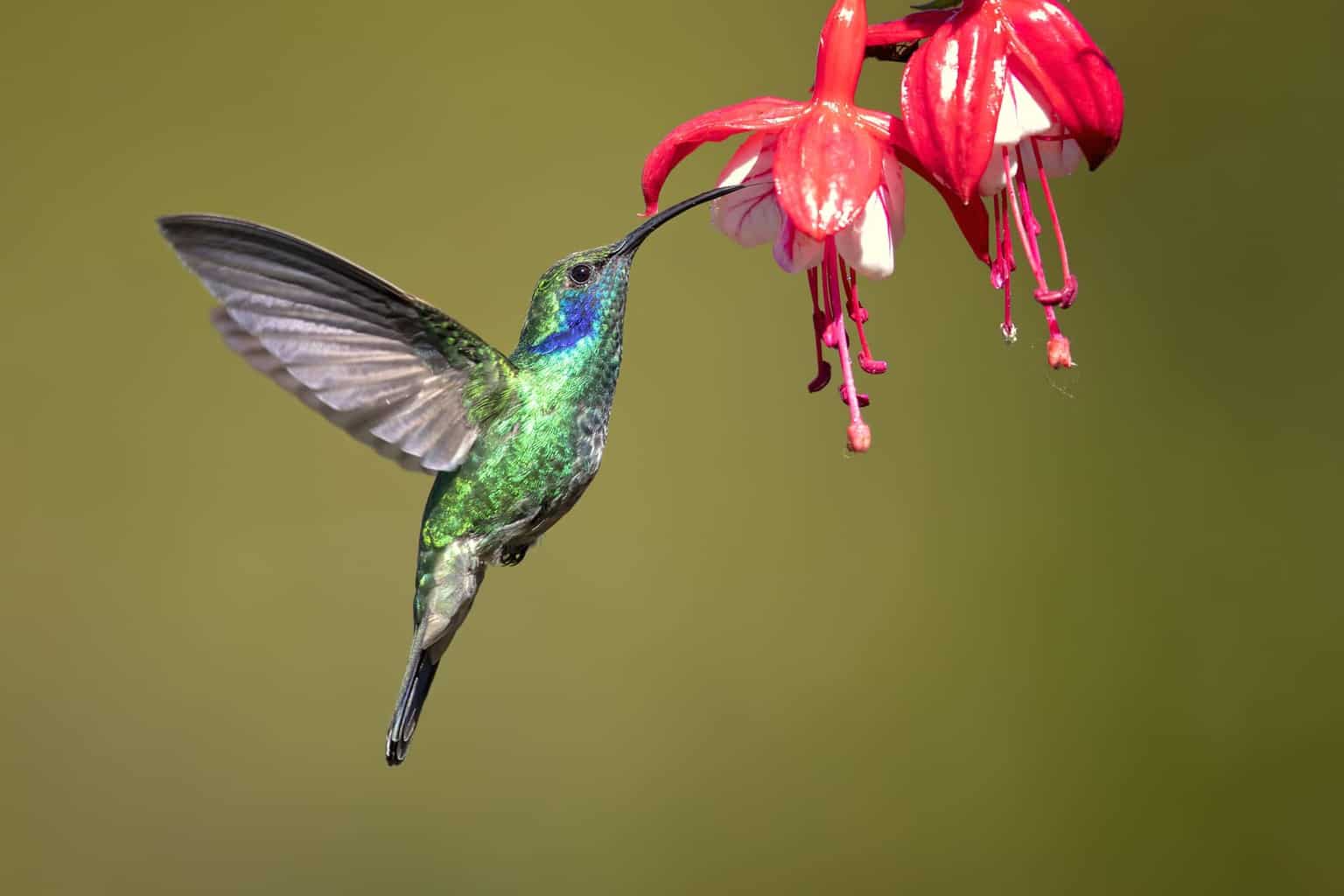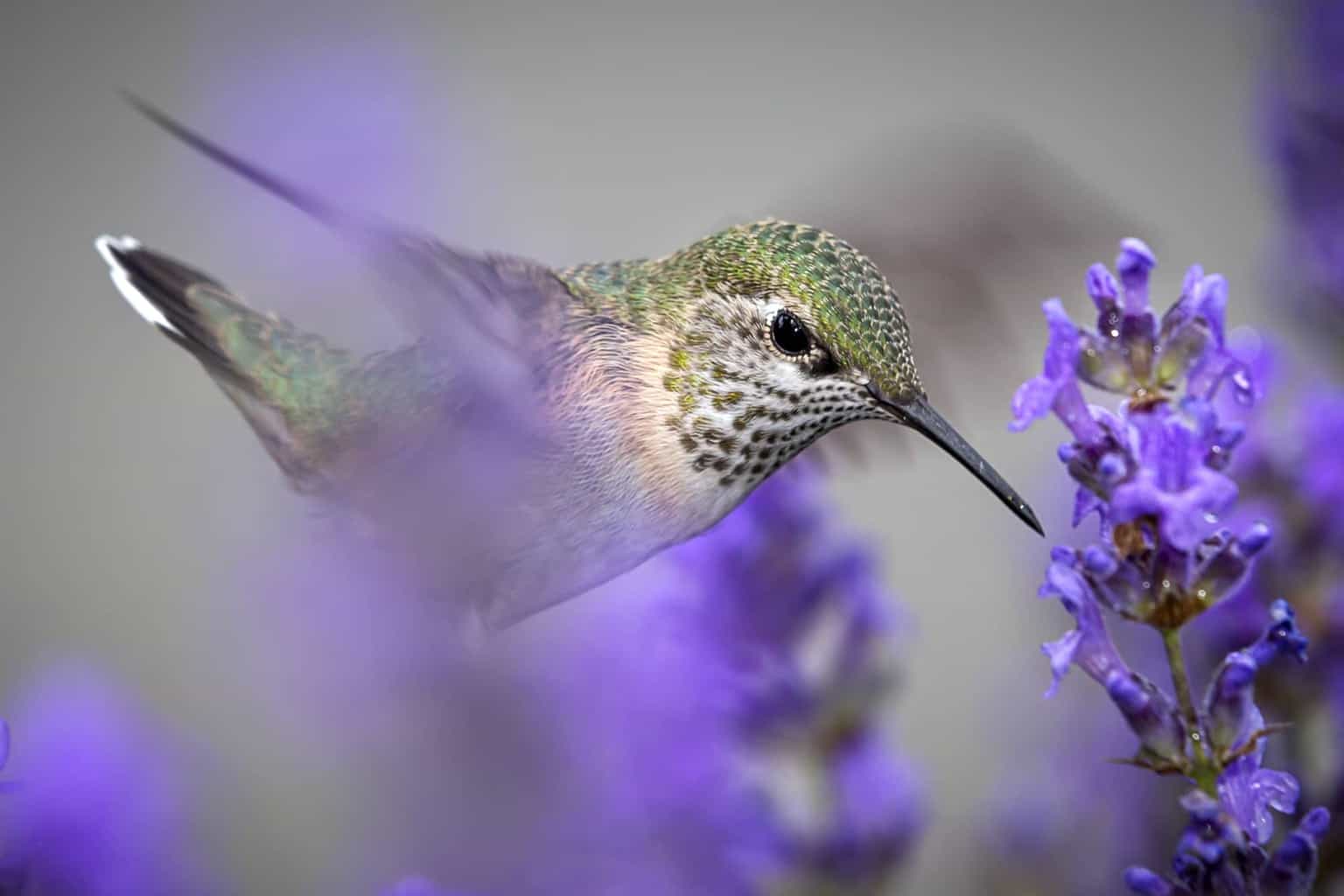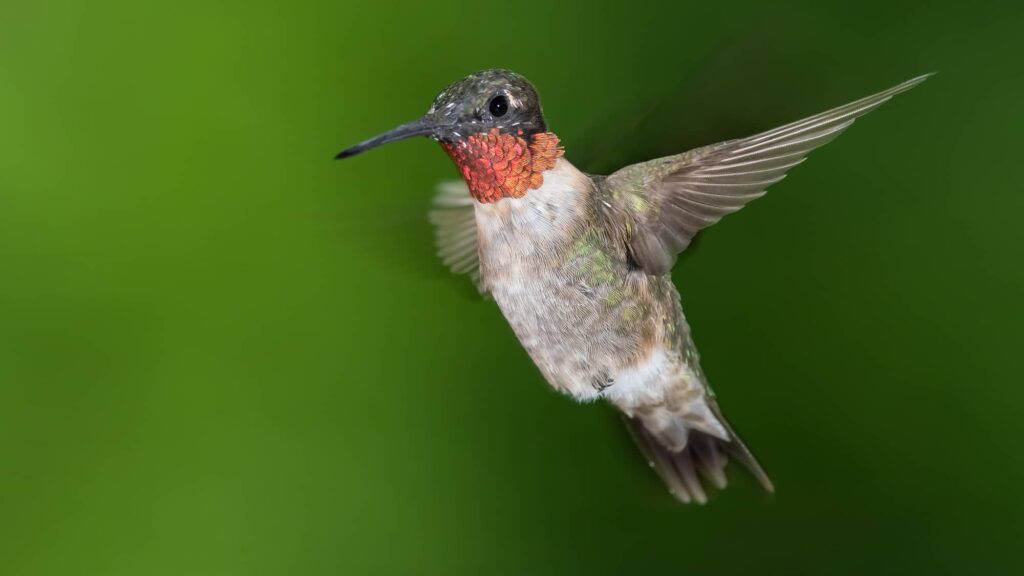Maine, also known as the Pine Tree State, is the northmost U.S. state in New England, sharing borders with New Hampshire, Canada, and the Atlantic Ocean. The state accounts for nearly half of the region’s entire land area; it is considered the biggest of the six New England states.
Also known as the Pine state, the state is covered with extensive pine forests, rocky coastlines, and beautiful national parks. Additionally, with over 3,478 miles of coastline, Maine is not heavily populated but overflows with wildlife, plants, and well-reserved natural areas that individuals love exploring.
According to the Maine Bird Records Committee, there are 465 documented individual bird species within Maine, including four different types of hummingbirds: the Ruby-throated, Rufous, Mexican violetear, and Calliope.
Let’s take a closer look at the listing of hummingbirds Maine has to offer.
Ruby-Throated Hummingbird (Archilochus Colubris)

- Length: 2.8 to 3.5 inches
- Weight: 0.12 ounces for males and 0.13 ounces for females
- Wingspan: 3.1 to 4.3 inches
Description:
Male Ruby-throated hummingbirds typically have a dark, blackish face and an iridescent ruby-red gorget that can appear dark in poor lighting. In addition, males display a gray-white chest that looks like a vest, bright metallic green flanks and crowns, darker wings, and forked tails with a faint violet sheen.
Female Ruby-throated hummingbirds have plain or lightly marked white throats with dusky streaks and slight buff flanks. More so, their sides are grayish-green and less brilliant than the males, and they have a notched tail, lacking the deeply forked tail of males.
Additional Information:
Ruby-throated hummingbirds typically breed in the eastern United States, then travel to Central America and South America to winter homes during migration season. That said, they are native breeders in Maine, arriving in early spring until the icy temperatures kick in.
Like lots of hummingbirds, Ruby-throated hummingbirds primarily rely on small insects or native nectar-filled flowers of shrubs, trees, and epiphytes as a primary food source to fuel their active lifestyles. So, consider planting bright, attractive flower patches with high sugar content in your garden to attract these whimsical birds.
Male and female Ruby-throats can become aggressive birds when near food sources, typically using unique acrobatic aerial or dive displays to defend their territory and ward off unwanted guests.
Considering that Ruby-throated hummingbirds weigh as little as one US penny or less, it’s pretty impressive that they accomplish a nonstop, 500-mile single flight across the Gulf of Mexico during the spring and fall migrations.
Rufous Hummingbird (Selasphorus Rufus)

- Length: 3.5 inches
- Weight: 0.07 to 0.17 ounces
- Wingspan: 4.3 inches
Description:
Male Rufous hummingbirds have a rusty, copper-orange rufous crown, flanks, and back with an iridescent orange-red throat. Additionally, about five to ten percent of males display a greenish wash on their heads and backs.
Female Rufous hummingbirds display green heads and backs and white, slightly speckled gorgets with a central orange-red splotch. Lastly, the females showcase buff chests and sides and dark green tails with a rusty, rufous base.
Additional Information:
Rufous hummingbirds are a rare sight in Maine.
Rufous hummingbirds are known for their highly aggressive nature, even towards larger birds, in feeding territories, including near backyard bird feeders. They typically produce a variety of threat displays, including dive displays, tail fanning, and high-pitched, chattering vocalizations.
If you’d like to attract Rufous hummingbirds to your garden, be sure to set up multiple, widely spread bird feeding stations in your backyard to attract these tiny birds; the farther they are apart, the better! Because of their feeding habits, separating one hummingbird feeder from another will allow other wayward hummingbirds to get a fair chance to enjoy the sugar water.
Despite their petite bodies, Rufous hummingbirds have the longest migration patterns of all birds in the United States, traveling an impressive 2,000 miles from Alaska to Mexico and back.
Mexican Violetear (Colibri Thelassinus)

- Length: 3.8 to 4.7 inches
- Weight: 0.17 to 0.19 ounces
- Wingspan: 4.7 inches
Description:
Mexican violetears have overall metallic to emerald green plumage, bluish-green tails with bronzy central feathers, and dark, iridescent violet cheeks and breasts.
Additional Information:
The Mexican violetear is a medium-sized hummingbird most common in forested areas ranging from the southwestern United States and Mexico to Nicaragua. It is, however, a somewhat nomadic bird, meaning that some of these wanderers can reach Maine even though it’s a rare sight.
Mexican violetear males are vocal birds that like to sing a jerky, metallic, chipping melody from exposed twigs in their territorial areas.
These vagrant hummingbirds typically enjoy foraging alone while feeding at mid-level to canopy zones in deforested areas. However, these territorial and aggressive birds occasionally gather at flowering trees, especially the coffee-shade Inga.
Mexican violetear hummingbirds belong to the Apodiformes order, which means “without foot.” Although Mexican violetear hummingbirds do have feet, they are tiny and weak, meaning they rarely walk.
Calliope Hummingbird (Stellula calliope)

- Length: 2.8 to 3.9 inches
- Weight: 0.07 to 0.1 ounces
- Wingspan: 4.3 inches
Description:
Calliope hummingbirds have glossy green upper plumage and creamy white under plumage with relatively short beaks and tails.
Calliope males have a white throat with distinctive, iridescent elongated wine-red throat feathers that show a “whiskered” effect when erected. In comparison, the Calliope hummingbird females display a dull white gorget with fine spots or streaks, a pinkish wash on their sides, and dark tails with white tips.
Additional Information:
Calliope hummingbirds are the smallest breeding birds common in the United States and Canada. The only smaller bird species ever found in the United States is another hummingbird type: the bumblebee hummingbird, an accidental vagrant bird native to Mexico.
Calliope hummingbirds are migratory birds that typically breed in open shrubs and high rocky mountain altitudes. Additionally, they leave their breeding ground earlier than most other bird species to take advantage of the late-summer wildflowers in the mountainous range of western North America before they depart for their winter residence.
Calliope hummingbirds are by far the smallest-bodied long-distance migrants in the world.
Conclusion
To date, there are recorded sightings of four different hummingbird species in Maine; the Ruby-throated, Rufous, Mexican violetear, and Calliope hummingbird.
Excluding the Ruby-throated hummingbird, the other three species are rare visitors. However, these beautiful birds are a sight for sore eyes when you are lucky enough to spot one zipping around the park or your backyard.
To further entice you into the state’s rich bird species list, fly over to 9 woodpeckers in Maine that you are guaranteed to see.

